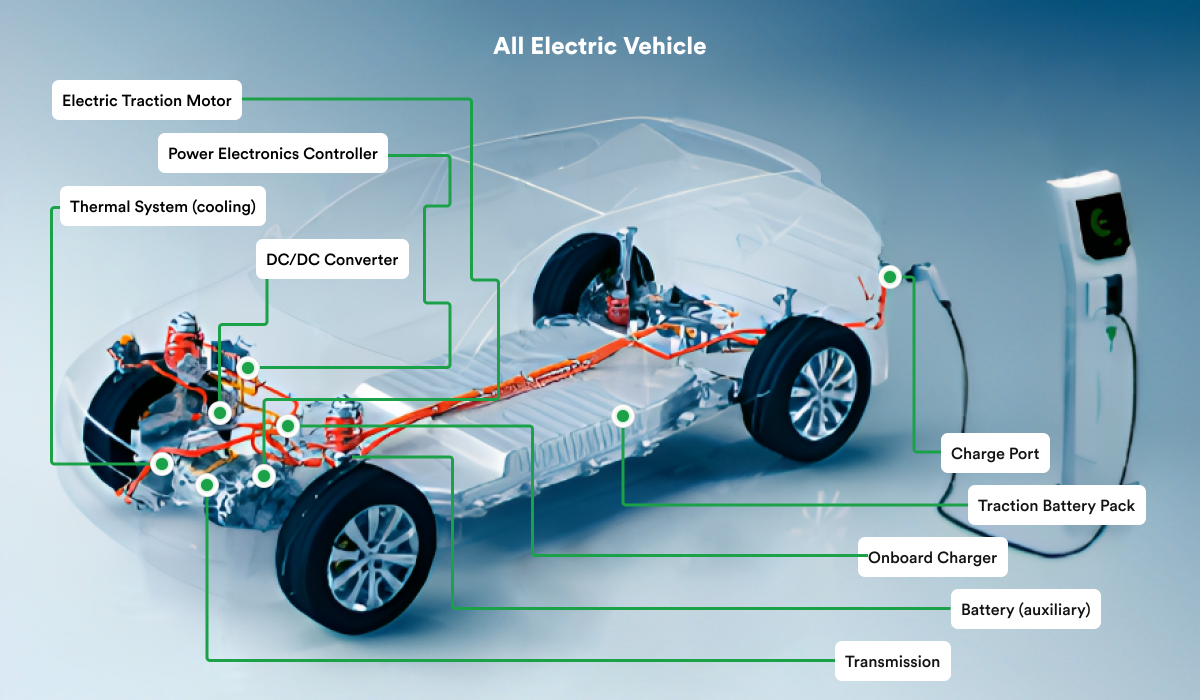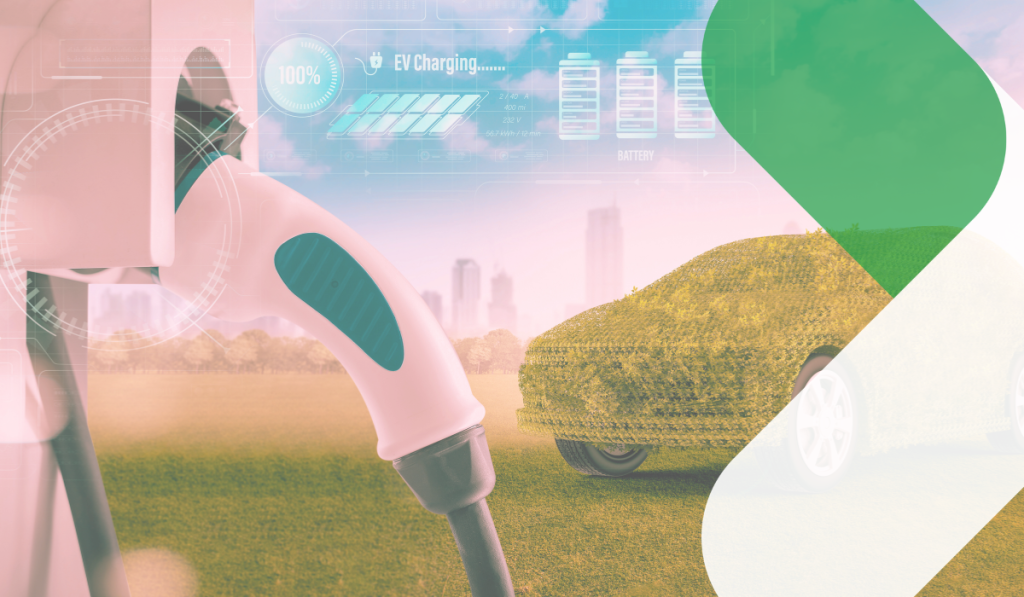
AI-Powered LiDAR: A New Era of Perception
How AI and ML enhance LiDAR technology by overcoming data processing challenges, enabling advanced applications in autonomous systems, robotics, and 3D mapping, and more.
According to the “Global EV Outlook 2023” Report by the International Energy Agency, the sales of electric cars are anticipated to maintain a robust trajectory throughout 2023. In the first quarter of 2023, more than 2.3 million electric vehicles were sold, demonstrating a remarkable 25% increase compared to last year.
The report further forecasts a substantial global expansion in the electric car market, with an estimated sale of nearly 14 million electric cars in 2023. This projection signifies a year-on-year growth of 35%, leading to a rise in the global market share of electric vehicle sales to around 18%, up from the 14% recorded in 2022.
Vehicle Electrification is the process of converting a vehicle to run on electricity by swapping out its conventionally powered components for electrically powered ones. This procedure focuses on the electrically powered drivetrain and its auxiliary systems, including wireless power transfer, on-board and off-board charging systems, and electric motors.
The phrase “electrified vehicles” refers to a variety of vehicle propulsion systems, such as fuel cell electric vehicles (FCEVs), plug-in hybrid electric vehicles (PHEVs), battery electric vehicles (BEVs), and hybrid electric vehicles (HEVs).
Internal combustion engines use fossil fuels in the traditional vehicle propulsion system, emitting hazardous gases into the environment, such as carbon dioxide (CO2), nitrogen oxides (NOx), and particulate matter. These emissions significantly impact environmental harm, global warming, and air pollution. By switching to healthier and more environmentally friendly options, vehicle electrification aims to lessen these negative consequences.

The increasing number of reasonably priced electric vehicles will be one of the most significant trends in 2023. Manufacturing costs have dramatically dropped as technology has advanced and economies of scale have been reached in EV production. As a result, EVs are now more affordable than their conventional equivalents on the sticker price. Thanks to this trend, a more significant portion of the population can now afford electric vehicles, which expands the market to an even broader range of consumers.
Continuous battery technology research and development has drastically reduced the cost of electric vehicle batteries, which was a major factor in the higher price of EVs. This was made possible by advancements in energy density, manufacturing techniques, and raw materials. Additionally, developing specialized EV platforms and optimizing manufacturing procedures have improved production efficiencies, significantly reducing manufacturing costs and allowing automakers to provide competitive pricing for EVs. Governments worldwide are participating by providing financial incentives and subsidies like tax credits, rebates, and grants, which significantly lower the effective cost of EVs and increase their consumer appeal and accessibility.
Due to increased competition among automakers brought on by the rising popularity of EVs, innovation and efficiency have increased, resulting in cost savings and a more comprehensive range of accessible EV options for consumers. Furthermore, the advent of the used electric vehicle industry, propelled by early adopters switching to newer models, boosts affordability by making well-kept used EVs more widely available at more affordable costs, appealing to customers on a tight budget.
The demand for a solid and extensive charging infrastructure has grown as electric cars (EVs) gain popularity. In vehicle electrification, the development of charging infrastructure is a crucial trend reshaping the mobility environment and solving range anxiety, a primary concern for potential EV users. This charging station network marks a fundamental transformation in our interaction with transportation and energy, moving us toward a more efficient and sustainable future. They go beyond simply recharging cars.
A comprehensive charging infrastructure is essential to catalyze the widespread use of electric vehicles. For consumers considering switching from conventional to electric cars, the accessibility and availability of charging stations play a decisive role. Knowing that charging stations are conveniently located along their daily routes and at their destinations alleviates worries about running out of batteries, thereby enhancing the confidence of potential electric vehicle buyers.
The P30 charging stations project we completed for one of our clients in the automotive sector featured a custom development and design solution to guarantee high-speed charging, compatibility, and a seamless user experience.
Although extending the infrastructure for charging is a significant step, challenges still exist. The seamless integration of charging infrastructure depends on coordinated efforts from governments, businesses, and energy suppliers. The expansion of this infrastructure is significantly sped up by regulatory assistance, financial incentives, and standardized requirements for charging equipment.
Government support has emerged as a crucial factor in accelerating the switch to electric cars (EVs) and promoting a sustainable transportation environment. Governments worldwide are putting in place various legislative measures to encourage the adoption of EVs as the world struggles with environmental issues and attempts to cut carbon emissions. These steps include financial incentives like tax credits, rebates, grants, and legislative and regulatory actions to encourage EV production, sales, and charging infrastructure development. Governments may accelerate the transition to cleaner transportation by strongly supporting and funding electric mobility. They can also help to create a future in which sustainable mobility is both a reality and a top priority.
It becomes clear that the drive behind this major transformation shows no signs of slowing down as we navigate the shifting vehicle electrification scenario of 2023. The developments and trends we have examined are merely the first steps toward a more technologically sophisticated and environmentally friendly transportation sector. Looking beyond the present year, several ground-breaking innovations promise to transform how we view, interact with, and benefit from electric vehicles (EVs).
The development of autonomous electric cars (AEVs) is one of the most significant advancements anticipated to alter the world of electric mobility after 2023 altogether. AEVs have the potential to completely change how we think about transportation, even though they are still in the early stages of research. Imagine a world in which automobiles interact with one another and the traffic infrastructure to move through traffic quickly, making commuting safer, more effective, and stress-free.
These self-driving EVs can potentially reduce traffic jams, enhance traffic flow, reduce accidents, improve air quality, and make cities more sustainable. AEVs are anticipated to be a key component of smart cities as technology develops, changing how cities are planned, how people commute, and how we view mobility in general. Autonomous and electric mobility are converging at the vanguard of innovation, providing a tantalizing look into a day when mobility is electrified, autonomous, effective, and seamlessly integrated into contemporary life.
The expansion of fleet electrification is a driving factor that can bring about significant change in the evolution of electric vehicles after 2023. Businesses, governments, and other organizations with sizable vehicle fleets are recognizing the environmental and financial advantages of switching to electric vehicles. In addition to reducing emissions individually, fleet electrification also has a multiplier effect that lowers emissions on a broader scale. These fleets may support cleaner air, lower operating costs, and a greener brand image by substituting traditional gasoline or diesel-powered cars with electric counterparts.
A practical example of a sustainable and ethical approach to mobility is using electric vehicles in public transportation and delivery services, encouraging others to follow suit, and minimizing pollution. Fleet electrification has the potential to alter the commercial vehicle environment significantly and, as a result, advance the transition to a more sustainable transportation future.
The unrelenting quest for innovation will continue to characterize the continual evolution of electric vehicles as we move beyond 2023. Unprecedented efficiency, convenience, and sustainability levels may be made possible by developing new EV technologies. Any remaining doubts regarding the performance and viability of EVs are put to rest by the promise of new battery chemistries to deliver even better energy densities, longer ranges, and faster charging times. The refueling process is about to be transformed by improvements in charging technology, such as wireless charging and ultra-fast charging, making it more convenient and frictionless.
Furthermore, advances in materials science are enabling lighter and stronger vehicle structures, which will improve safety and energy efficiency. Each advancement in electric mobility is paving the way for a future that is not just electric but also smarter, more adaptable, and infinitely more thrilling, thanks to the convergence of classic automotive engineering and cutting-edge technology.
The incorporation of 5G technology is an influential factor in the landscape of electric car electrification beyond 2023, improving the complete electric mobility experience. For electric vehicles and the ecosystem around them, the fifth generation of wireless technology is expected to open up new connectivity, communication, and efficiency possibilities. 5G technology allows for in-vehicle, charging station, and traffic infrastructure real-time connectivity due to its unmatched data rates, extremely low latency, and large capacity. Thanks to this connectivity, autonomous electric vehicles can easily navigate intricate metropolitan landscapes, making split-second judgments based on the most recent traffic data and road conditions.
Additionally, 5G-enabled V2X (Vehicle-to-Everything) communication improves safety by enabling cars to speak with other drivers, pedestrians, and cyclists, which lowers the risk of collisions. Incorporating 5G technology also makes it possible to manage energy dynamically, optimizing charging procedures by grid circumstances and demand trends. We are moving towards an electrified, intelligent, and deeply connected future as electric mobility and the digital revolution converge. The 5G technology and electric vehicles are a testament to the remarkable synergy between cutting-edge telecommunications and sustainable transportation.
The electrification of vehicles is not simply a trend; it is an influential force changing the automotive sector and how we travel. The increasing adoption of electric vehicles in 2023 is driven by significant factors like higher affordability, enhanced battery technology, extended charging infrastructure, and government backing.
Beyond 2023, the expansion of vehicle electrification will be further fueled by the emergence of autonomous electric vehicles (EVs), fleet electrification, ongoing technological improvements, and the incorporation of 5G technology. Adopting these trends and technologies will be crucial in establishing a cleaner and greener transportation ecology for future generations as we progress toward a more sustainable and electrified future.

How AI and ML enhance LiDAR technology by overcoming data processing challenges, enabling advanced applications in autonomous systems, robotics, and 3D mapping, and more.

Offering insights into how the latest AI advancements will impact consumers, manufacturers, and the broader environment in 2025 and beyond.

Showcasing the environmental and economic benefits of integrating sustainable materials and robust recycling practices into the automotive value chain.
Copyright © 2023 rinf.tech. All Rights Reserved.
Terms & Conditions. Cookie Policy. Privacy Policy.
Politica Avertizari de Integritate (RO)